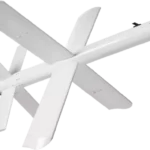You are using an out of date browser. It may not display this or other websites correctly.
You should upgrade or use an alternative browser.
You should upgrade or use an alternative browser.
Marine Corps, Navy Remain Split Over Design, Number of Future Light Amphibious Warship, Divide Risks Stalling Program
- Thread starter daftandbarmy
- Start date
GR66
Army.ca Veteran
- Reaction score
- 5,020
- Points
- 1,160
If you haven't already read it you might want to look at the report that CSIS published about the wargaming it did on a Chinese invasion of Taiwan. In the wargames they found the new Marine Littoral Regiments of limited usefulness. Politics didn't generally allow them to be forward deployed before the conflict started (deemed too provocative?). Once hostilities began, resupply proved extremely difficult due to Chinese air power.The Marines seem to have been captured by the Australian shipping industry.
Could they end up following the example of De Meuron's and De Watteville's Regiments?

This Weird Little Ship Could Be the Future of Amphibious Warfare
It’s no secret that the U.S. Navy and U.S. Marine Corps want to buy smaller, cheaper amphibious ships for landing troops and equipment on enemy shores. The new, small amphibs would complement the Navy’s existing force of around three-dozen large vessels, helping the fleet to spread out over a...nationalinterest.org
Cargo Ships | Naval Architects, Consultants & Surveyors
SEATRANSPORT has a broad experience in cargo ship design, work vessel design and conducting feasibility studies for such vessels intended for coastal shipping operations.seatransport.com
The USMC seems to be finding ships that they want operating in the waters they want to operate in.
Easier to marry a local duckbilled platypus than get the USN to spec one.

Kidding aside part of the advantage of the design may be in that very long bifold ramp
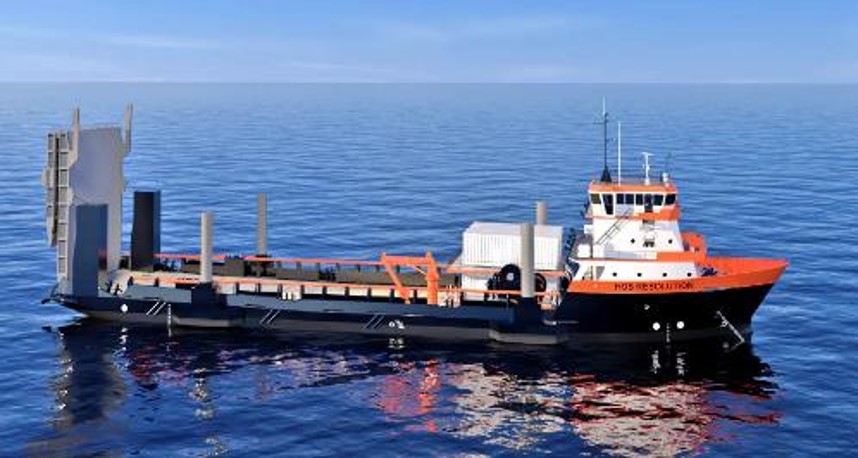
I'm not sure what the solution is for the Pacific theatre. Ships...even small, fast ships that can't defend themselves are probably not very survivable if they attempt to get within useful range of Chinese forces. Adding escorts defeats the purpose of dispersed operations by making the flotillas larger and making them more easily detected through their EM signatures. We're nowhere near the point that troop carrying submarines are economically feasible.
I think at this point long-range aircraft carrying long range missiles, theatre range ground-launched missiles and submarines are likely the most effective types of assets that we could use in a war with China. The "new" Marine Corps structure is likely better suited than the old one, but probably only marginally so.
- Reaction score
- 9,784
- Points
- 1,160
If you haven't already read it you might want to look at the report that CSIS published about the wargaming it did on a Chinese invasion of Taiwan. In the wargames they found the new Marine Littoral Regiments of limited usefulness. Politics didn't generally allow them to be forward deployed before the conflict started (deemed too provocative?). Once hostilities began, resupply proved extremely difficult due to Chinese air power.
I'm not sure what the solution is for the Pacific theatre. Ships...even small, fast ships that can't defend themselves are probably not very survivable if they attempt to get within useful range of Chinese forces. Adding escorts defeats the purpose of dispersed operations by making the flotillas larger and making them more easily detected through their EM signatures. We're nowhere near the point that troop carrying submarines are economically feasible.
I think at this point long-range aircraft carrying long range missiles, theatre range ground-launched missiles and submarines are likely the most effective types of assets that we could use in a war with China. The "new" Marine Corps structure is likely better suited than the old one, but probably only marginally so.
Small ships may not be survivable individually but I doubt the survivability of big ships with large numbers of bodies on board - regardless of how many of them are running around with duct tape and mattresses plugging holes.
As to opinions - even professional ones - well even professionals have their preferred opinions.
Politics is always going to be an issue. And they are going to vary over time.
I will continue to favour the Marine Littoral Regiment as a useful addition to the tool kit that makes the opposition think about other things the Americans might be able to do to them. And cause them to stretch their resources.
- Reaction score
- 9,784
- Points
- 1,160
Number of islands in the First Island Chain (Plus Indonesia)
Japan - 14,125 islands
Philippines - 7,100 islands
Indonesia - 18,110 islands
That is 40,000 places to put firing points or 40,000 hills to hide ships behind. The USMC wants to hide 32 ships.
And there are a lot more islands in the vicinity.


 www.cnn.com
www.cnn.com
Add in these
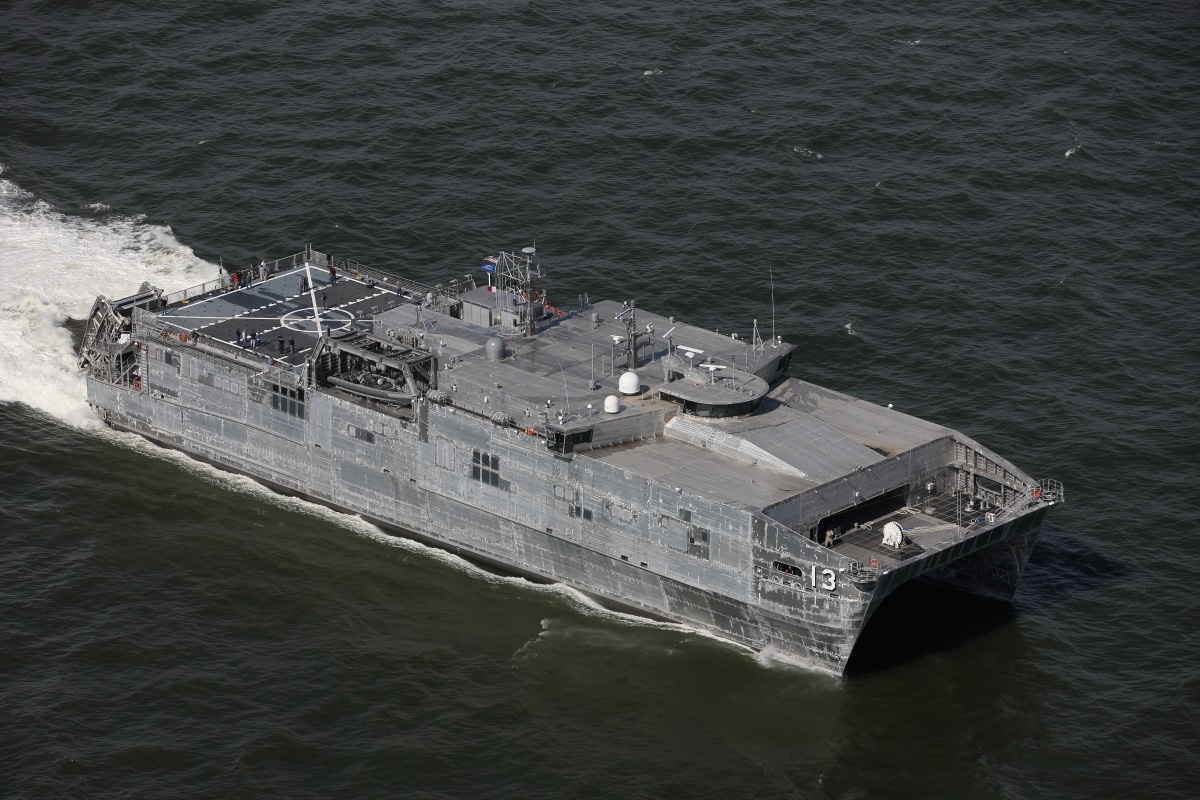
 www.navalnews.com
www.navalnews.com

 www.popularmechanics.com
www.popularmechanics.com
And you are now playing Battleship on a grand scale.
Even moreso when you add in the submarine fleet.
China is building new missile silos as it expands its nuclear capabilities.
 www.armscontrol.org
www.armscontrol.org
Except that it is relatively cheap to dig a hole in the ground which may or may not contain a missile, which may or may not be a new missile, which may or may not have a warhead, which may or may not be a MIRV.
Lots of uncertainty there. Which plays to China's advantage.
Any uncertainty the US can create on the First Island Chain plays to the advantage of the US and its local allies.
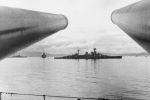
 blog.usni.org
blog.usni.org
Japan - 14,125 islands
Philippines - 7,100 islands
Indonesia - 18,110 islands
That is 40,000 places to put firing points or 40,000 hills to hide ships behind. The USMC wants to hide 32 ships.
And there are a lot more islands in the vicinity.


Japan just found 7,000 islands it didn't know it had
Japan has recounted its islands -- and discovered it has 7,000 more than it previously thought.
Add in these

Austal USA Delivers First 'Autonomous Capable' EPF Ship to US Navy - Naval News
Austal USA delivered Expeditionary Fast Transport USNS Apalachicola (EPF 13) to the U.S. Navy, today.

Here Comes the Navy's Latest Robo-Ship, Testing Out a ‘Ghost Fleet’ Concept
Unmanned ships will help the U.S. Navy accomplish tasks that are difficult or dangerous for manned vessels. Plus, 12 of them could potentially replace a $1.8 billion Burke-class destroyer and patrol 12 times as much water.
And you are now playing Battleship on a grand scale.
Even moreso when you add in the submarine fleet.
China is building new missile silos as it expands its nuclear capabilities.
New Chinese Missile Silo Fields Discovered | Arms Control Association
Except that it is relatively cheap to dig a hole in the ground which may or may not contain a missile, which may or may not be a new missile, which may or may not have a warhead, which may or may not be a MIRV.
Lots of uncertainty there. Which plays to China's advantage.
Any uncertainty the US can create on the First Island Chain plays to the advantage of the US and its local allies.

Who is Ready to Make a Decoy Fleet?
One of the challenges our navy faces it that we have not had a serious challenge at sea for generations. Throughout human history, a recurring theme at war is having to relearn – and some cases reinvent - the forgotten tactics, tools, and methods of previous conflicts. Some things almost...
Colin Parkinson
Army.ca Relic
- Reaction score
- 13,488
- Points
- 1,160
Thinking more like oil rig platforms, along with some infilling.
- Reaction score
- 9,784
- Points
- 1,160
Thinking more like oil rig platforms, along with some infilling.


Commandant: Long-Range USV Will Be Primarily an ISR Platform That Launches Unmanned Assets - Seapower
Commandant: Long-Range USV Will Be Primarily an ISR Platform That Launches Unmanned Assets Front Page
As part of the uncertainty game - Long Range Unmanned Surface Vessels. Originally sold as ISR asset - OPs and LPs. Then armed with the Hero-120 system
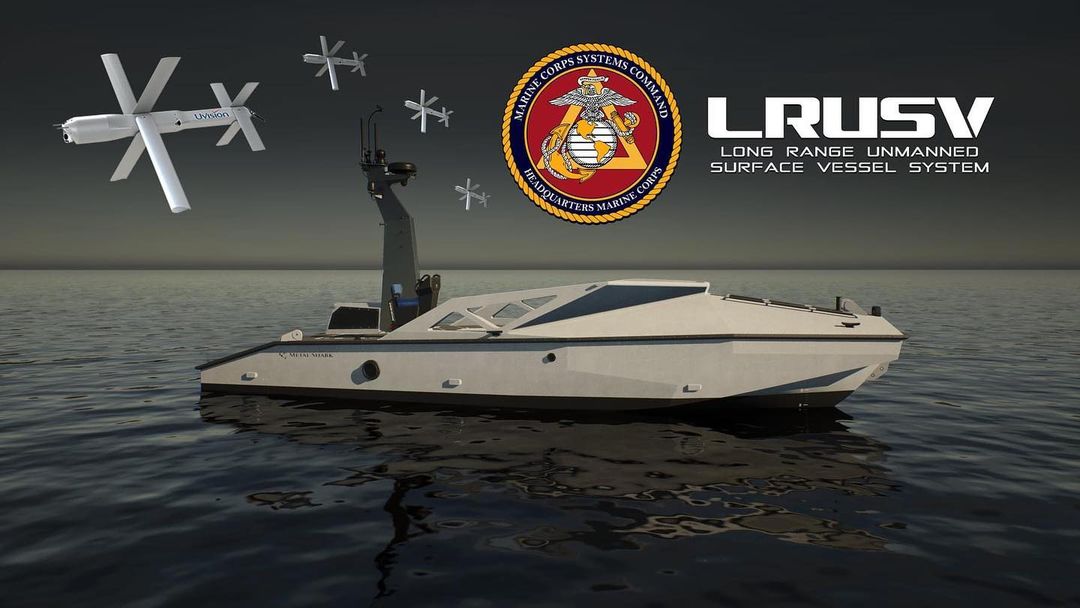
The first weapon system for the USMC's new LRUSV: Hero-120 - Naval Post- Naval News and Information
he first weapon system for the United States Marine Corps’ new Long Range Unmanned Surface Vessel (LRUSV) has been confirmed. The UVision Air Ltd. Hero-120 Organic Precision Fires (OPF) smart loitering munition system
Hero-120 60 km in 60 minutes with a 4.5 kg warhead and a camera to keep the man in the loop.
So what would it take to make the LRUSVs appear like Carriers, Destroyers and Amphibs - and then disappear?
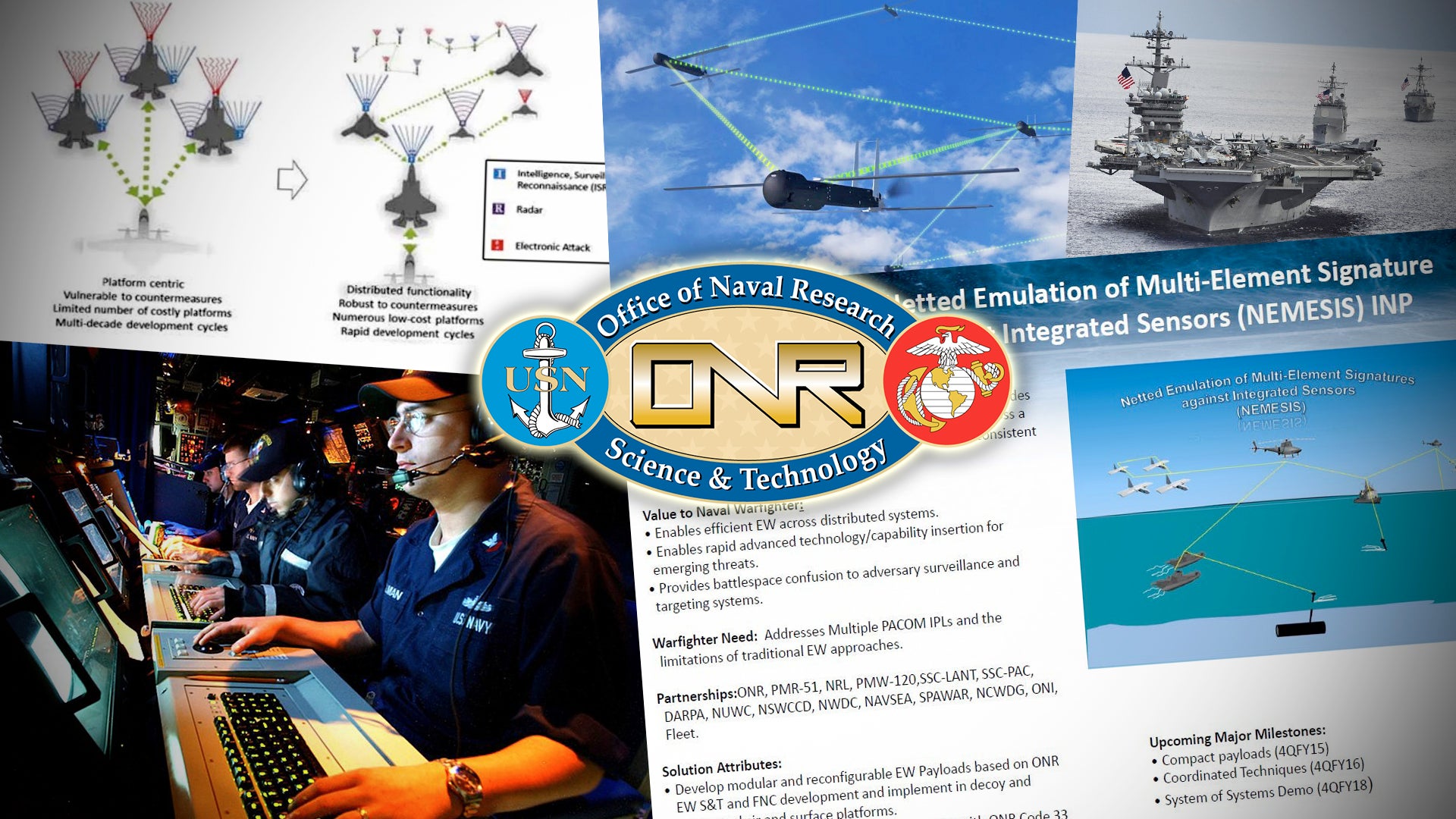
The Navy's Secretive And Revolutionary Program To Project False Fleets From Drone Swarms
The advanced electronic warfare program uses swarms in the air and sea to cooperatively fool a wide variety of sensors dispersed over a large area.
:quality(70)/cloudfront-us-east-1.images.arcpublishing.com/archetype/EPVXRCEBBVAT3MOSDZQSV7XKIA.jpg)
What’s new in Navy and Marine Corps unmanned boats
The more the Navy experiments with unmanned systems, the more it's learning what it needs — and what it doesn't.
- Reaction score
- 9,784
- Points
- 1,160
So if you put the pieces of the puzzle together you end up with a sea full of islands with lots of people making their livings in boats in amongst those islands. In that cluster the USMC and the USN propose to launch a swarm of unmanned fast boats capable of gathering intelligence, spoofing enemy sensors and launching swarms of loitering attack missiles that can imperil small targets ashore and afloat - such as sensors and the fishing boats of the Peoples Militia.
In this mess the USN then has avaialable unmanned autonomous EPF fast cats and Off Shore Supply Vessels from which the USMC can discharge unmanned JLTVs carrying pairs of unmanned NSMs with ranges against sea and land targets of over 185 km. The NSM was developed by Norway explicitly to be effective manoeuvering in the clutter of skerries an islands that surround Scandinavia.

:quality(70)/cloudfront-us-east-1.images.arcpublishing.com/archetype/VECAYCDEPFCBJD67ZKH6MPSABM.jpg)
So how many Marines does the USMC have to invest to cause the Peoples Republic of China to have a case of the vapours?
In this mess the USN then has avaialable unmanned autonomous EPF fast cats and Off Shore Supply Vessels from which the USMC can discharge unmanned JLTVs carrying pairs of unmanned NSMs with ranges against sea and land targets of over 185 km. The NSM was developed by Norway explicitly to be effective manoeuvering in the clutter of skerries an islands that surround Scandinavia.

:quality(70)/cloudfront-us-east-1.images.arcpublishing.com/archetype/VECAYCDEPFCBJD67ZKH6MPSABM.jpg)
So how many Marines does the USMC have to invest to cause the Peoples Republic of China to have a case of the vapours?
Colin Parkinson
Army.ca Relic
- Reaction score
- 13,488
- Points
- 1,160
You still need bases on those islands as a political statement. Just as the Chinese have done.
- Reaction score
- 9,784
- Points
- 1,160
You still need bases on those islands as a political statement. Just as the Chinese have done.
Do you need a political statement that creates physical targets with a population that has mixed feelings about the presence of "outsiders"? Or is it enough that the local government declares its willingness to permit the deployment of "allied" forces should the situation require it?
China just has to believe that the US threat is a real one that could have a real impact on China's real plans.
The Americans can deploy from Japan to Taiwan and from Australia, Micronesia and Polynesia to the Phillipines and Indonesia.
The are always adding to their bag of tricks - like the one I mentioned the Aussies want to emulate
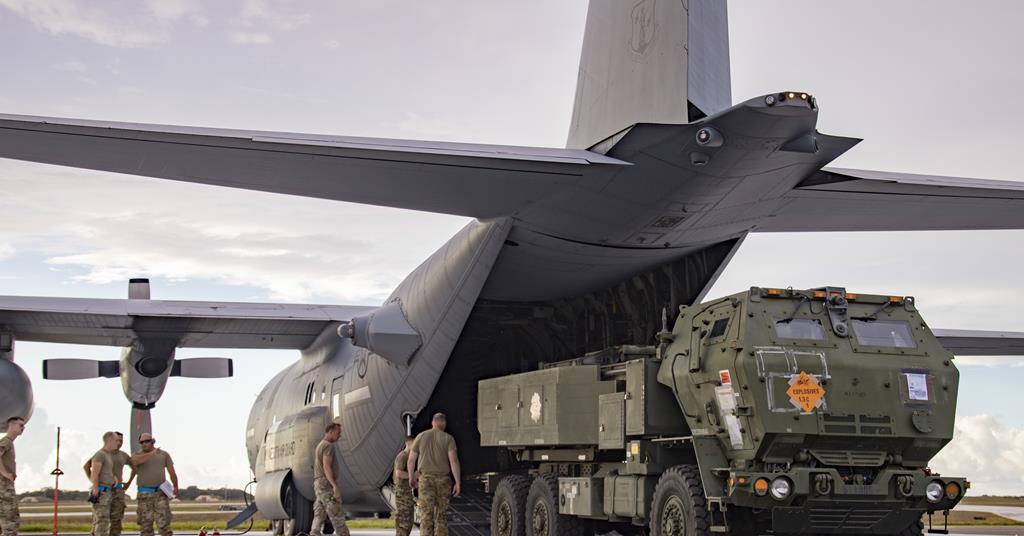
Australia developing ‘shoot and scoot’ capability using C-130s and rocket artillery
With plans to purchase the US-made expeditionary rocket system known as HIMARS, Australia wants to turn its C-130 cargo transports into a long-range precision strike system.
Colin Parkinson
Army.ca Relic
- Reaction score
- 13,488
- Points
- 1,160
Yes you do, because the most of the islands are uninhabited and there presence and ownership dictates oil, mineral and fishing rights. china's policy is to use a "all of government and industry approach to gaining the islands" Failure to preempt them has led to China claiming several important islands, which will have severe implications for generations to come.Do you need a political statement that creates physical targets with a population that has mixed feelings about the presence of "outsiders"? Or is it enough that the local government declares its willingness to permit the deployment of "allied" forces should the situation require it?
China just has to believe that the US threat is a real one that could have a real impact on China's real plans.
The Americans can deploy from Japan to Taiwan and from Australia, Micronesia and Polynesia to the Phillipines and Indonesia.
The are always adding to their bag of tricks - like the one I mentioned the Aussies want to emulate

Australia developing ‘shoot and scoot’ capability using C-130s and rocket artillery
With plans to purchase the US-made expeditionary rocket system known as HIMARS, Australia wants to turn its C-130 cargo transports into a long-range precision strike system.www.flightglobal.com
- Reaction score
- 7,705
- Points
- 1,140
In the case of a Chinese invasion of Taiwan, the USMC and America will commit more than a single littoral regiment. If America commits to Taiwan, it will be several carrier strike groups, to protect the big ships full of bodies. Bodies will be army, marines, and navy, likely combined with a coalition of Japanese, and South Korean forces.If you haven't already read it you might want to look at the report that CSIS published about the wargaming it did on a Chinese invasion of Taiwan. In the wargames they found the new Marine Littoral Regiments of limited usefulness. Politics didn't generally allow them to be forward deployed before the conflict started (deemed too provocative?). Once hostilities began, resupply proved extremely difficult due to Chinese air power.
I'm not sure what the solution is for the Pacific theatre. Ships...even small, fast ships that can't defend themselves are probably not very survivable if they attempt to get within useful range of Chinese forces. Adding escorts defeats the purpose of dispersed operations by making the flotillas larger and making them more easily detected through their EM signatures. We're nowhere near the point that troop carrying submarines are economically feasible.
I think at this point long-range aircraft carrying long range missiles, theatre range ground-launched missiles and submarines are likely the most effective types of assets that we could use in a war with China. The "new" Marine Corps structure is likely better suited than the old one, but probably only marginally so.
The whole point of the littoral regiments is to put marines into places the PLA isn't, to prevent the PLAN from maneuvering how they want to.
Last edited:
- Reaction score
- 9,784
- Points
- 1,160
Yes you do, because the most of the islands are uninhabited and there presence and ownership dictates oil, mineral and fishing rights. china's policy is to use a "all of government and industry approach to gaining the islands" Failure to preempt them has led to China claiming several important islands, which will have severe implications for generations to come.
Understood. If we're talking about the uninhabited islands. I doubt that would present the same problems as, for example, Clark AFB

Clark Air Base - Wikipedia
In June 2012, the Philippine government, under pressure from Chinese claims to their seas, agreed to the return of American military forces to Clark.
- Reaction score
- 9,784
- Points
- 1,160

:quality(70)/cloudfront-us-east-1.images.arcpublishing.com/archetype/UJKIYIPXL5EENPT7ZXS2XE2ZVU.jpg)
New in 2024: Testing to decide future of new Marine landing ship
The landing ship medium will be the Corps' first modern stern landing vessel.
:quality(70):focal(3237x742:3247x752)/cloudfront-us-east-1.images.arcpublishing.com/archetype/GXIQN7SSNVCMLAI7OYGHPUFQDY.jpg)
Marines to test out first stern landing vessel at Project Convergence
Five companies are building competitive prototypes, and the Marines will select one to fulfill the Landing Ship Medium program within the next two years.
Marines plan to test a new ship this spring that they see as the answer to fighting in littorals with new formations.
The landing ship medium, formerly known as the light amphibious warship, is the service’s first modern stern-landing vessel. Marines will test out the shore-to-shore connector at the Army’s Project Convergence event in early 2024, Defense News reported.
The USMC test vessel derived from a Hornbeck Offshore Supply Vessel.


The Marine Corps will use one HOS Resolution offshore supply vessel by Hornbeck Offshore Services as a light amphibious warship surrogate for experimentation and operations. (Hornbeck Offshore Services photo)
:quality(70)/cloudfront-us-east-1.images.arcpublishing.com/archetype/6O744SEJHRBSNLENZ3K5WUIARM.jpg)
Marines to update amphibious ops concept amid uncertainty over future ship count
The commandant wants a Concept for 21st Century Amphibious Operations by the end of the year, after earlier Force Design 2030 modernization efforts have focused on stand-in forces operating as smaller units on smaller vessels.
Also


US Navy Hires Hornbeck OSV
The U.S. Navy has hired a Hornbeck Offshore offshore support vessel (OSV) to support its submarine fleet operational and rescue requirements…

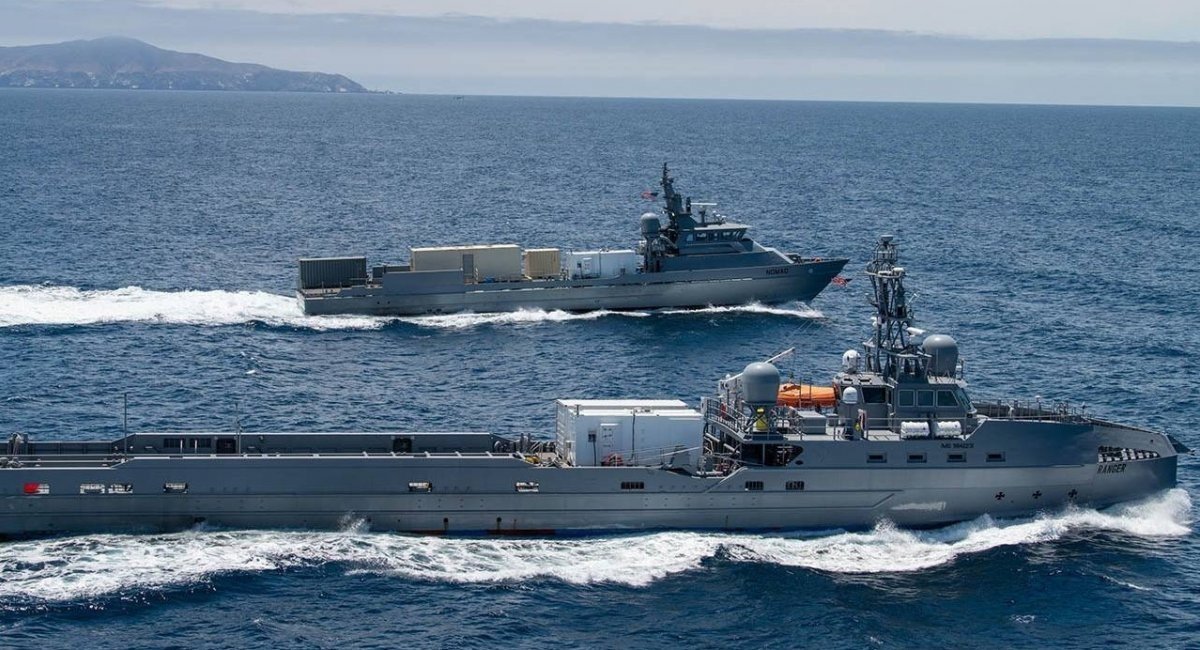
Third U.S. Navy's Overlord Medium Unmanned Surface Vessel: With a New Feature to Avoid Distracting the Destroyer | Defense Express
The U.S. is actively developing a fleet of surface drones
The Offshore Supply Vessel type seems to becoming popular in a variety of roles.
Especially if you are not overly worried about crewing them.
- Reaction score
- 9,784
- Points
- 1,160
But it’s just not unmanned ground and aerial vehicles being demoed this year: Rainey said the Army is eager to evaluate an unspecified Marine Corps’ autonomous watercraft.
“We said, ‘Hey, make sure you bring that out to Project Convergence,’” he said.
The Army’s newly established logistics cross-functional team, Rainey explained, will be on site to collect data about that watercraft’s performance which it could potentially use to avoid conducting a timely watercraft study and find ways to save dollars.
“It’s not a total solution. They have a different problem but there’s a lot of overlap,” Rainey said of the Marines.
I wonder if that Hornbeck OSV is outfitted with the same autonomous controls as the Ranger, Nomad and Mariner.
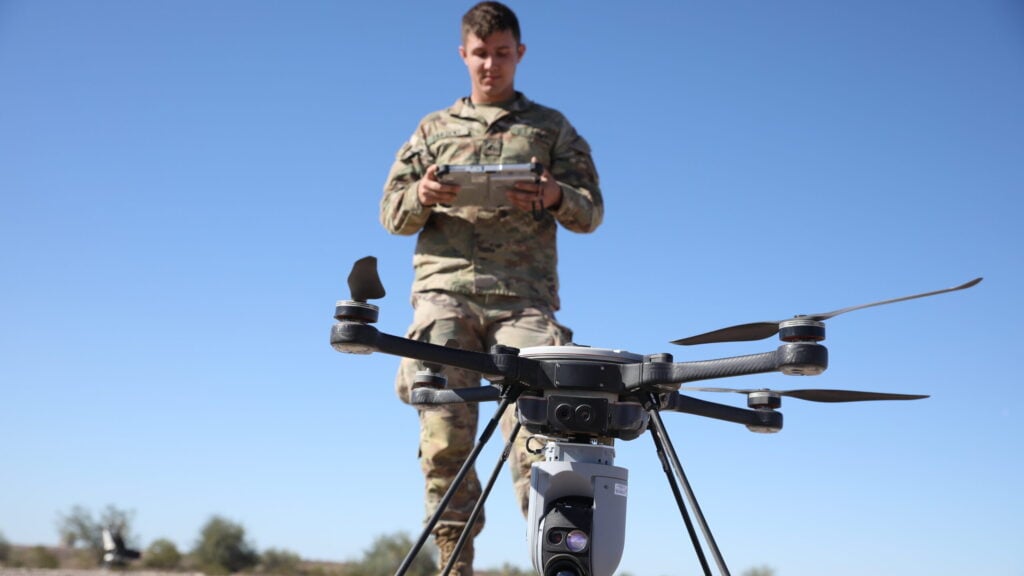
Fires, AI and human-machine prototype unites: Army gears up for Project Convergence - Breaking Defense
A trio of Army generals recently described the service's plans for two-part Project Convergence event that will include new sensor-to-shooter integration, two formations with added robots, and a USMC autonomous watercraft.
But it could also be this
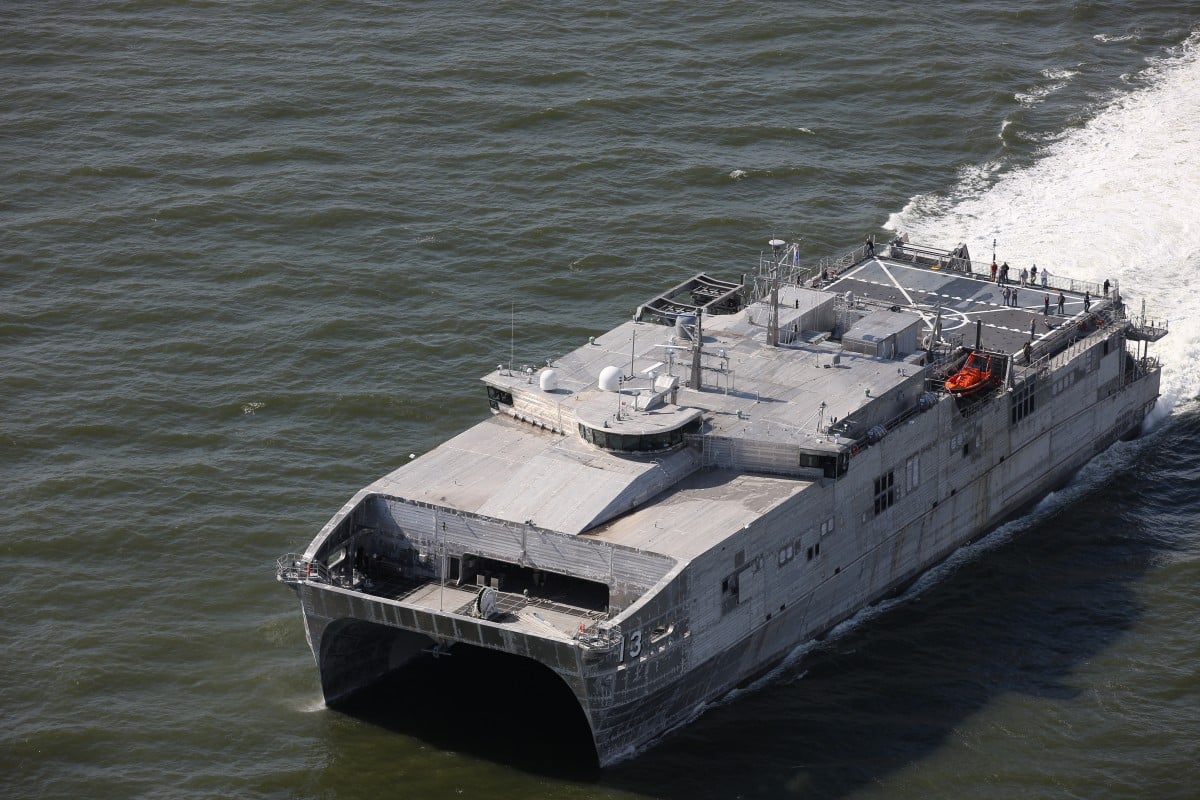
Crew-Optional USNS Apalachicola Delivers to the Navy, Ship’s Unmanned Future Unclear - USNI News
SAN DIEGO – A logistics ship that Congress directed the Navy to build with the ability to operate autonomously delivered to the service on Thursday, Naval Sea Systems Command announced. Spearhead-class aluminum catamaran USNS Apalachicola (EPF-13) is now set to operate in the Western Pacific in...
- Reaction score
- 9,784
- Points
- 1,160
So the Navy cancelled the RFP for the LSM that the USMC wanted.
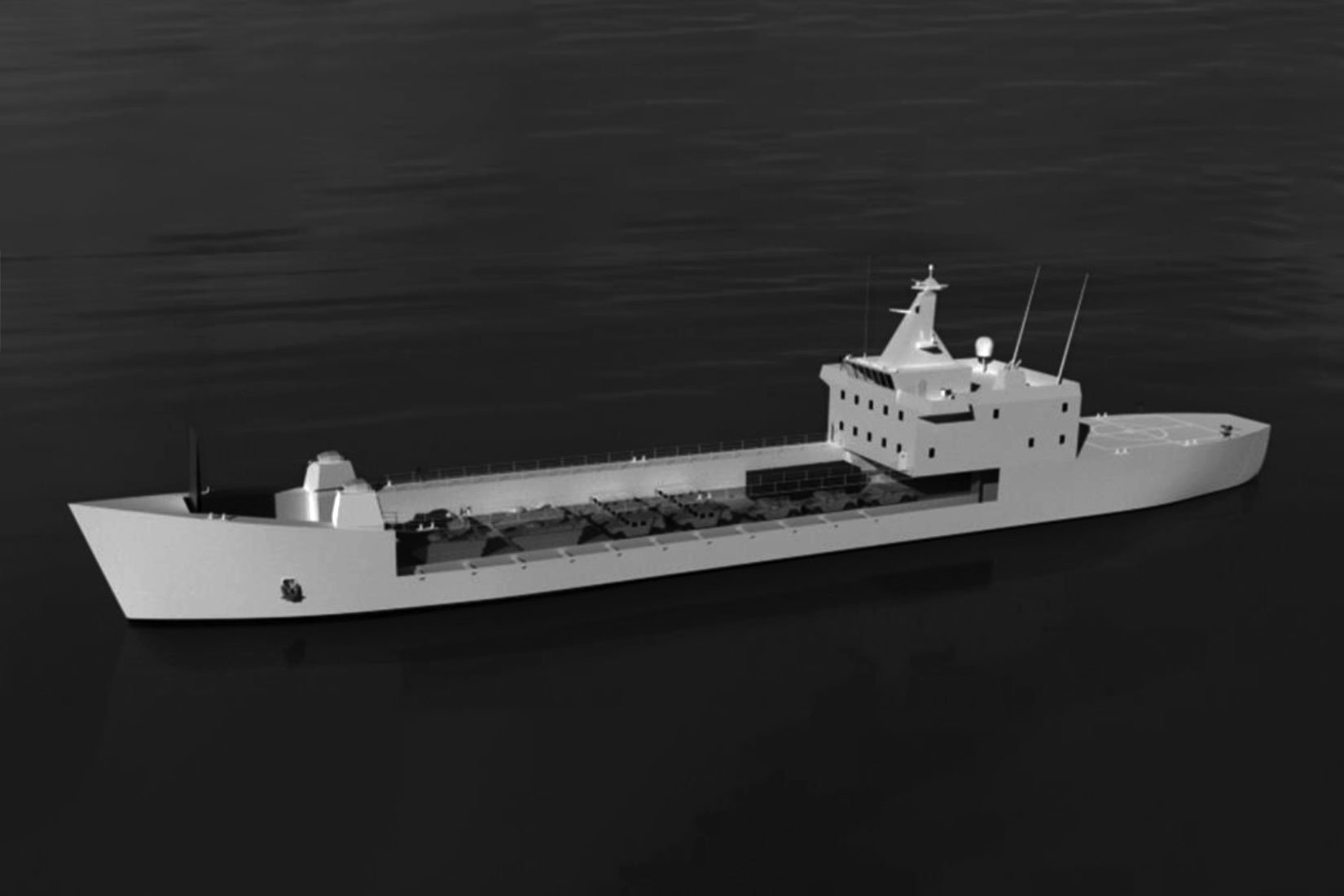
 news.usni.org
news.usni.org
But the Army was proceeding with its less expensive, but more capable, though less survivable heavy watercraft that operated with a smaller crew.
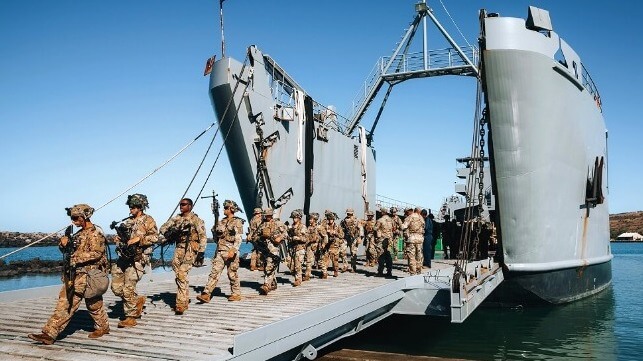
 maritime-executive.com
maritime-executive.com
....
Navy has reversed course
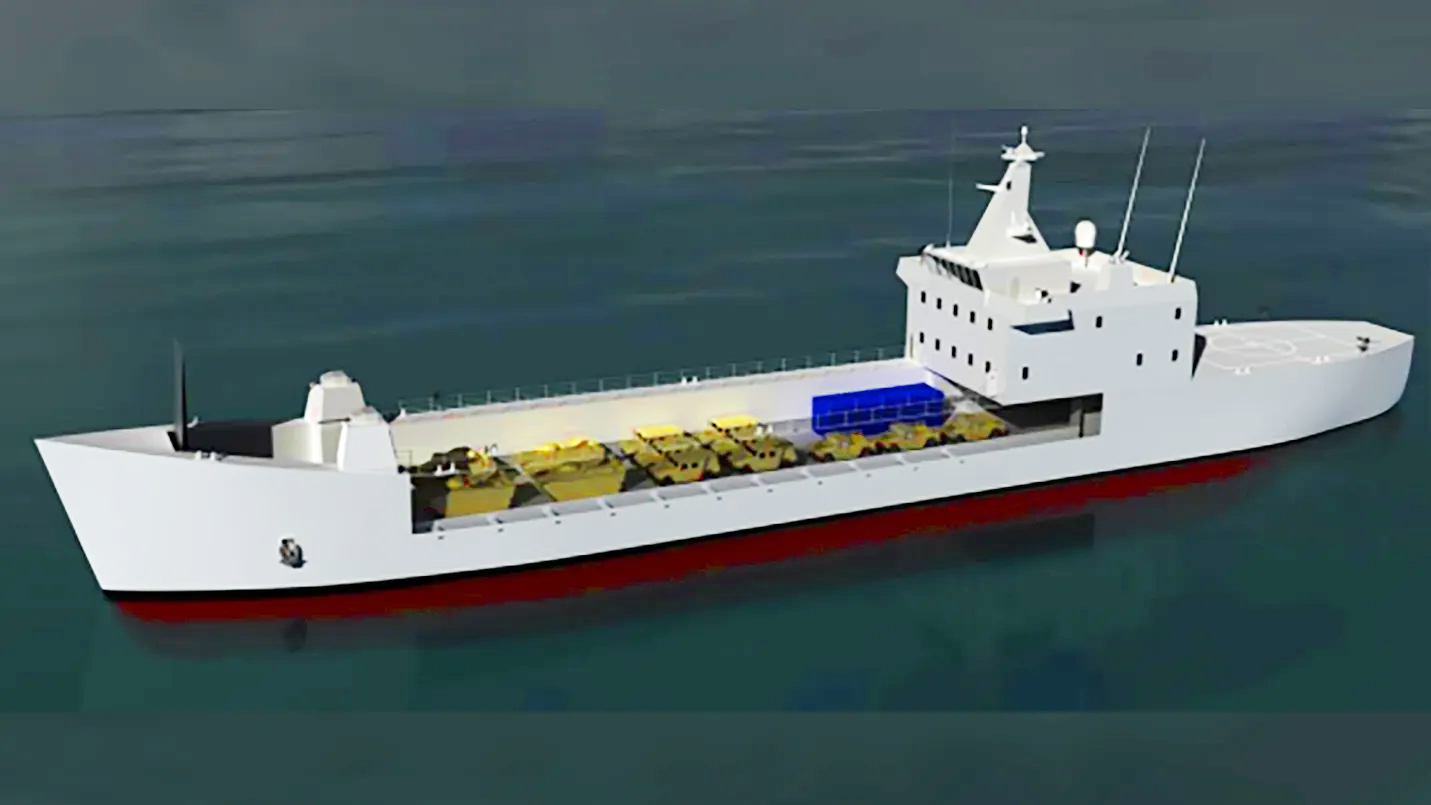
 www.twz.com
www.twz.com
...
Which kind of puts things back where the USMC was when they opened the discussion some years back. And where the Army is.

Landing Ship Medium Stalled Over Cost, Navy Cancels RFP - USNI News
The development of a new landing ship key to the Marines Corps’ island-hopping strategy in the Western Pacific is on hold due to Navy concerns over cost, USNI News has learned. After receiving bids from industry, the Navy canceled the request for proposals for the Landing Ship Medium, a...
But the Army was proceeding with its less expensive, but more capable, though less survivable heavy watercraft that operated with a smaller crew.

U.S. Army's Next Heavy Landing Ship May Outclass Marine Corps' LSM
The U.S. Army's little-known Watercraft Systems division plans to acquire a new fleet of landing ships that could outclass the U.S. Marine Corps&#...
....
Navy has reversed course

Navy Now Seeking Commercial Ship Design To Propel Its Long-Delayed Medium Landing Ship Program Forward
The Navy halted the Medium Landing Ship effort last month after high cost estimates and is now seeking commercial vessel designs to move Marines in a Pacific fight.
After years of delays procuring its own Medium Landing Ship (LSM) to ferry platoon-size elements of Marines between West Pacific islands during a war with China, the U.S. Navy is now looking to existing, private-sector designs to potentially fill this capability gap.
Naval Sea Systems Command (NAVSEA) issued a new RFI to industry seeking an existing vessel design that could be retrofitted into a LSM that would require only minor modifications to fulfill requirements.
The new RFI, released on Jan. 6, seeks a landing ship that can conduct shore-to-shore beaching operations, while loading and unloading cargo directly onto a beach. It calls for a vessel that is shorter than 400 feet, with a 300-ton minimum cargo capacity. The request makes no mention of potential lethality or survivability upgrades that could be integrated into the existing platform.
...
Which kind of puts things back where the USMC was when they opened the discussion some years back. And where the Army is.
Attachments
- Reaction score
- 9,784
- Points
- 1,160
While the USN/USMC were mucking around, and the US Army plowed on alone, the Aussies were doing this

 www.austal.com
www.austal.com

 www.damen.com
www.damen.com

Australian Government announces Landing Craft Heavy Design to be constructed at Henderson Defence Precinct
COMPANY ANNOUNCEMENT 25 NOVEMBER 2024 AUSTRALIAN GOVERNMENT ANNOUNCES LANDING CRAFT HEAVY DESIGN TO BE CONSTRUCTED AT HENDERSON DEFENCE PRECINCT Austal Limited (Austal) (ASX: ASB) welcomes the announcement by the Australian Government on the selection of Damen’s Landing Ship Transport 100...
Damen’s LST100 vessel design has a 3,900-tonne displacement, with a length overall (LOA) of 100 metres and a beam (width) of 16 metres. The Landing Craft Heavy will be capable of operating with other vessels to undertake a range of tasks including troop insertion and extraction, logistics movements and humanitarian assistance and disaster relief.
The vessel will be capable of carrying more than 500 tonnes of military vehicles and equipment – it is intended to carry six Abrams Tanks,11 Redback Infantry Fighting Vehicles or 26 HIMARS - and will be fitted with self-defence weapons systems and Australian military communications.
Subject to acceptable commercial negotiations and demonstrated performance under the Strategic Shipbuilding Agreement, Austal is expected to commence construction of the first Landing Craft Heavy vessel in 2026. The potential value of the project to Austal’s order book is yet to be fully determined and will be developed through the ongoing commercial discussions with the Australian Government in the coming months.

LST 100 - Landing Ship Transport | Damen
Damen Landing Ship Transport 100 provides access and support to shallow and small harbours and provides military clients with amphibious capability.

Last edited:
Colin Parkinson
Army.ca Relic
- Reaction score
- 13,488
- Points
- 1,160
I would like to see Canada to get two of those run by the Fleet Auxiliary, with one crewed and other in hot layup to provide shore landing capability, mainly in the Arctic. But could be mobilized to assist elsewhere as needed.While the USN/USMC were mucking around, and the US Army plowed on alone, the Aussies were doing this

Australian Government announces Landing Craft Heavy Design to be constructed at Henderson Defence Precinct
COMPANY ANNOUNCEMENT 25 NOVEMBER 2024 AUSTRALIAN GOVERNMENT ANNOUNCES LANDING CRAFT HEAVY DESIGN TO BE CONSTRUCTED AT HENDERSON DEFENCE PRECINCT Austal Limited (Austal) (ASX: ASB) welcomes the announcement by the Australian Government on the selection of Damen’s Landing Ship Transport 100...www.austal.com
View attachment 90550
LST 100 - Landing Ship Transport | Damen
Damen Landing Ship Transport 100 provides access and support to shallow and small harbours and provides military clients with amphibious capability.www.damen.com
View attachment 90551
Similar threads
- Replies
- 0
- Views
- 10K
- Replies
- 2
- Views
- 13K
- Replies
- 0
- Views
- 7K


